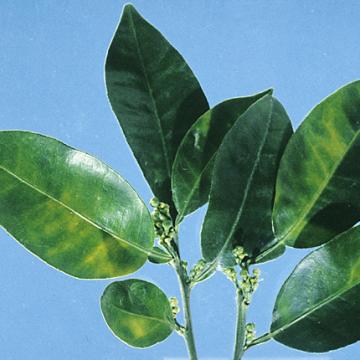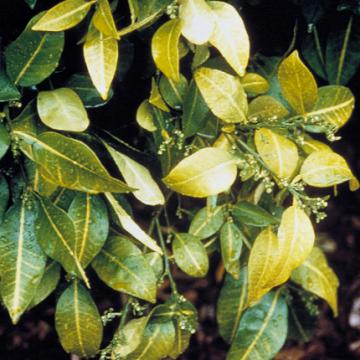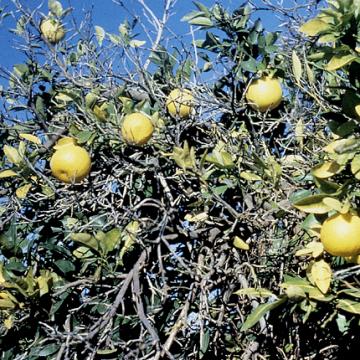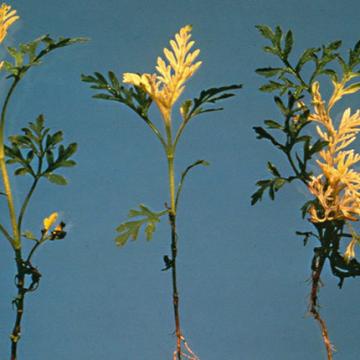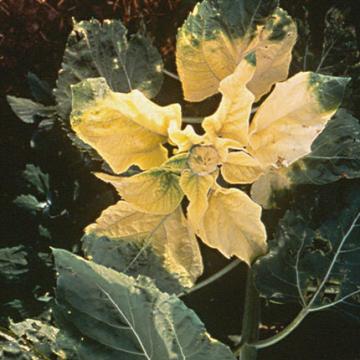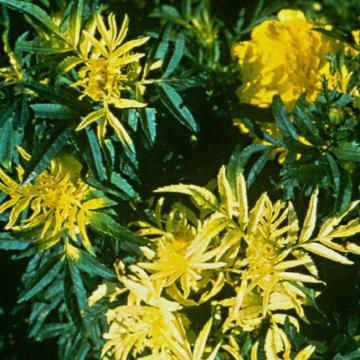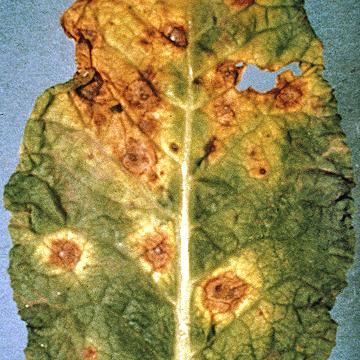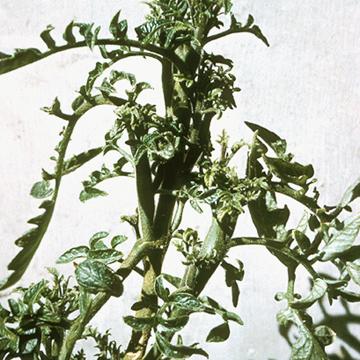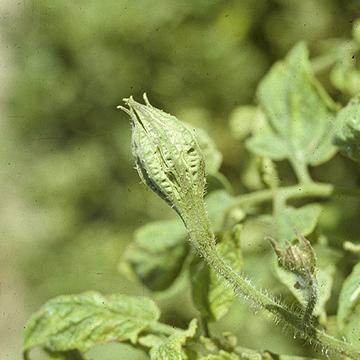DISEASE: Australian citrus dieback
HOST: Citrus (Grapefruit)
Leaves with mottled chlorosis.
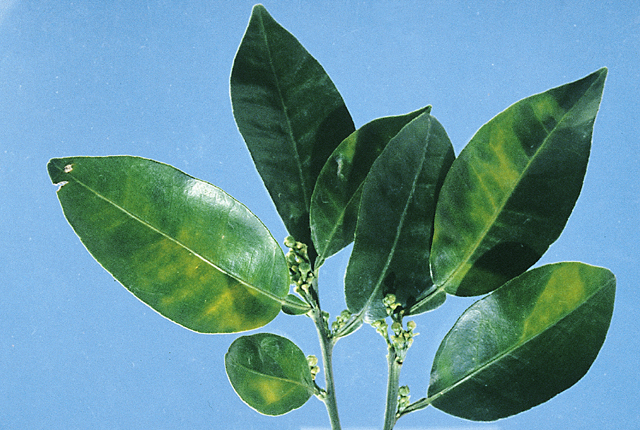
Australian citrus dieback | Citrus (Grapefruit)
DISEASE: Australian citrus dieback
HOST: Citrus (Grapefruit) (Citrus paradisi)
PATHOGEN: 'Candidatus Phytoplasma' sp.
PATHOGEN SYNONYM: Phytoplasma (undefined)
SOURCE: P. Broadbent
DISEASE: Australian citrus dieback
HOST: Citrus (Grapefruit)
Late stage of disease. Note yellowing of leaf veins and entire leaves.
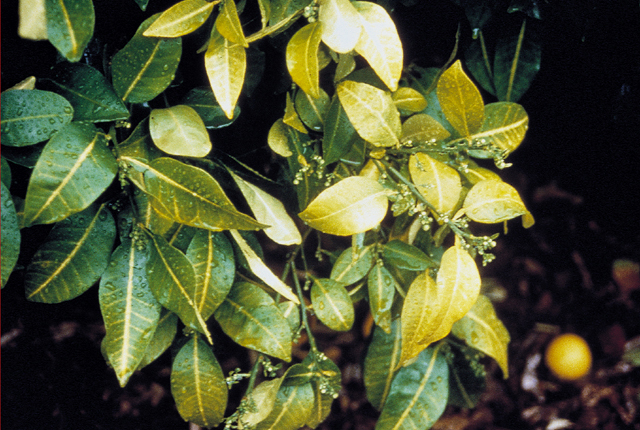
Australian citrus dieback | Citrus (Grapefruit)
DISEASE: Australian citrus dieback
HOST: Citrus (Grapefruit) (Citrus paradisi)
PATHOGEN: 'Candidatus Phytoplasma' sp.
PATHOGEN SYNONYM: Phytoplasma (undefined)
SOURCE: P. Broadbent
DISEASE: Australian citrus dieback
HOST: Citrus (Lime)
Severe decline, a late stage of disease. The disease spreads slowly in mature trees, progressing faster in young trees.
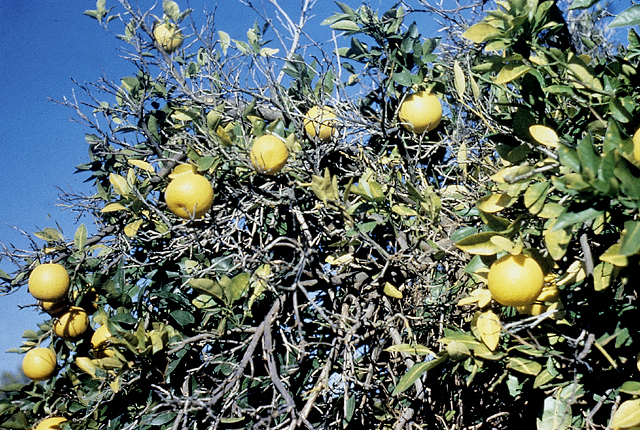
Australian citrus dieback | Citrus (Lime)
DISEASE: Australian citrus dieback
HOST: Citrus (Lime) (Citrus sp.)
PATHOGEN: 'Candidatus Phytoplasma australiense'
PATHOGEN SYNONYM: Phytoplasma Stolbur group
SOURCE: P. Broadbent
DISEASE: Pseudomonas leaf spot
HOST: Marigold
Marigolds with yellow apical chlorosis attributed to toxin production by the pathogen.
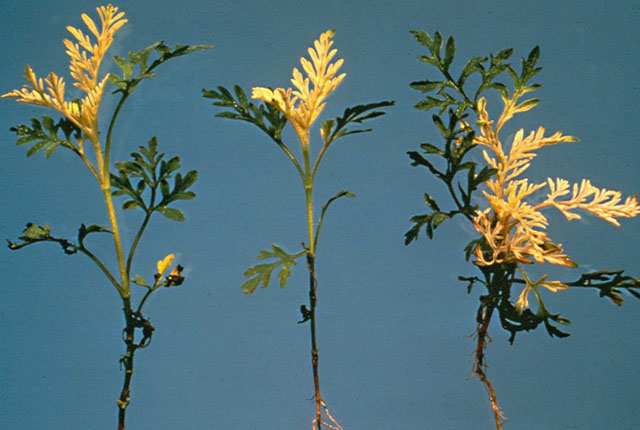
Pseudomonas leaf spot | Marigold
DISEASE: Pseudomonas leaf spot
HOST: Marigold (Tagetes erecta)
PATHOGEN: Pseudomonas syringae pv. tagetis
SOURCE: R. Durbin
DISEASE: Pseudomonas leaf spot
HOST: Marigold
Chlorotic leaves with total loss of chlorophyll. Disease is also known as toxic chlorosis.
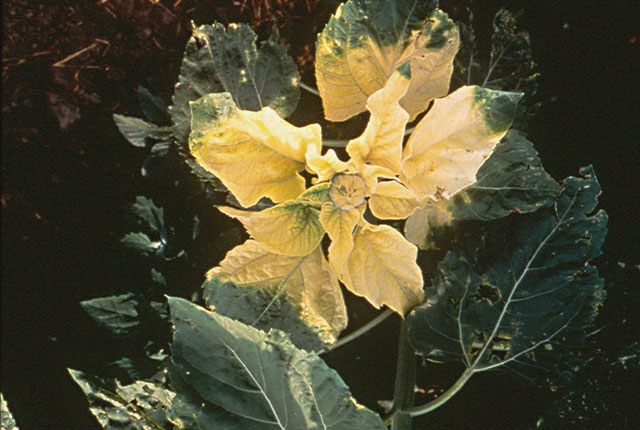
Pseudomonas leaf spot | Marigold
DISEASE: Pseudomonas leaf spot
HOST: Marigold (Tagetes erecta)
PATHOGEN: Pseudomonas syringae pv. tagetis
SOURCE: R. Durbin
DISEASE: Pseudomonas leaf spot
HOST: Marigold
Plants with bright yellow apical chlorosis.
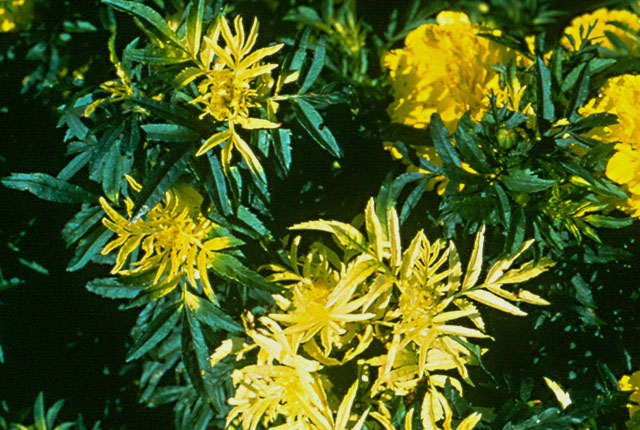
Pseudomonas leaf spot | Marigold
DISEASE: Pseudomonas leaf spot
HOST: Marigold (Tagetes patula)
PATHOGEN: Pseudomonas syringae pv. tagetis
SOURCE: R. Durbin
DISEASE: Pseudomonas leaf spot
HOST: Primrose
Leaf with brownish red spots and reddening of adjacent areas. Disease begins as small, water-soaked lesions that later coalesce into large necrotic spots.
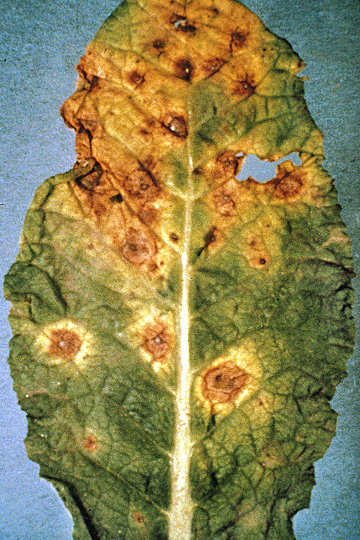
Pseudomonas leaf spot | Primrose
DISEASE: Pseudomonas leaf spot
HOST: Primrose (Primula sp.)
PATHOGEN: Pseudomonas syringae pv. primulae
SOURCE: APS
DISEASE: Tomato big bud
HOST: Tomato
Characteristic symptoms are swollen, apical stems and stunted leaves. Apical stems are generally thickened and assume a stiff and erect growth habit. Internodes are shortened and flower buds are greatly enlarged.
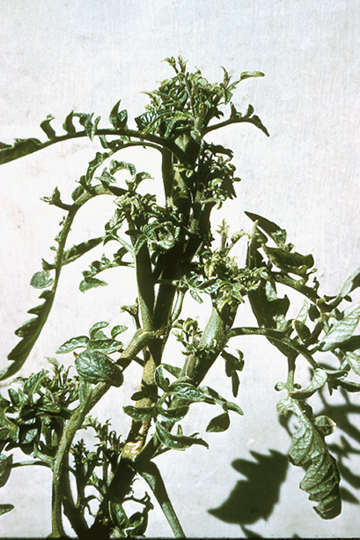
Tomato big bud | Tomato
DISEASE: Tomato big bud
HOST: Tomato (Lycopersicon esculentum)
PATHOGEN: 'Candidatus Phytoplasma asteris'
PATHOGEN SYNONYM: Phytoplasma Aster yellows group
SOURCE: D. Teakle
DISEASE: Tomato big bud
HOST: Tomato
Symptoms are enlarge sepals that do not separate. Flower buds stay green and do not develop into fruit. Leaves are small and chlorotic.
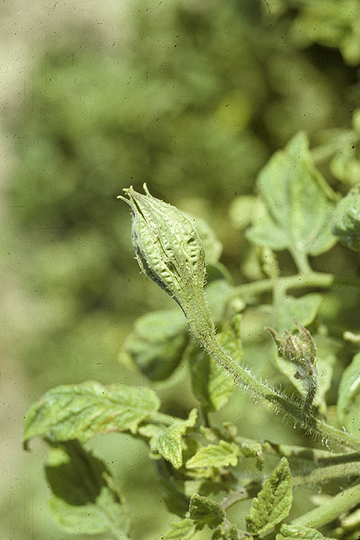
Tomato big bud | Tomato
DISEASE: Tomato big bud
HOST: Tomato (Lycopersicon esculentum)
PATHOGEN: 'Candidatus Phytoplasma asteris'
PATHOGEN SYNONYM: Phytoplasma Aster yellows group
SOURCE: S. Thomson


